Healthcare KPIs
Healthcare providers are tasked with managing a myriad of moving parts at the same time, such as patient care, facility management and ER conditions. To do this successfully, they need access to the right healthcare KPIs and metrics.
The data your team needs to make the right call.
Healthcare providers are tasked with managing a huge variety of moving parts at the same time, such as patient care, facility management, and emergency room conditions. To do this effectively, healthcare organizations rely on having access to the latest performance data so they can make the right decision at the right time. Use these healthcare KPIs and metrics to give your team the data they need to make those tough calls with confidence.
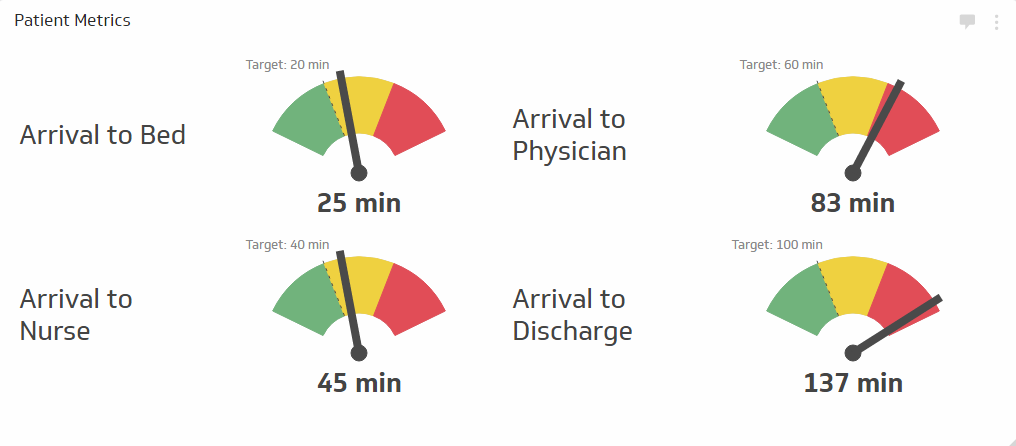
The Time to Healthcare Service KPI measures your organization’s ability to provide incoming patients with healthcare service in a timely manner. This KPI should measure multiple services that your patients will receive after admittance, such as the time it takes to see a nurse or physician or how long it takes to be discharged. Awareness of wait-time trends and the current situation will allow healthcare providers to make educated decisions on a variety of needs, such as staffing, budgeting, and equipment allocation.
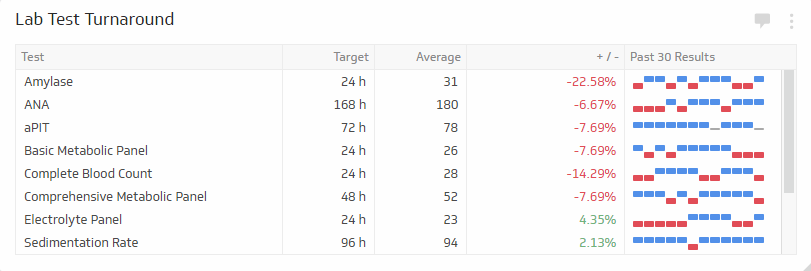
The Lab Turnaround Time KPI measures the ability of your lab to process lab results. This is the base KPI for any lab and is a leading indicator for patient satisfaction. To calculate this KPI, you will create a breakdown for each type of test processed in your lab, since some tests take longer than others to complete. Your task for this KPI is determining what the acceptable norms are for each type of test, and using that as your base comparison for the turnaround metric.
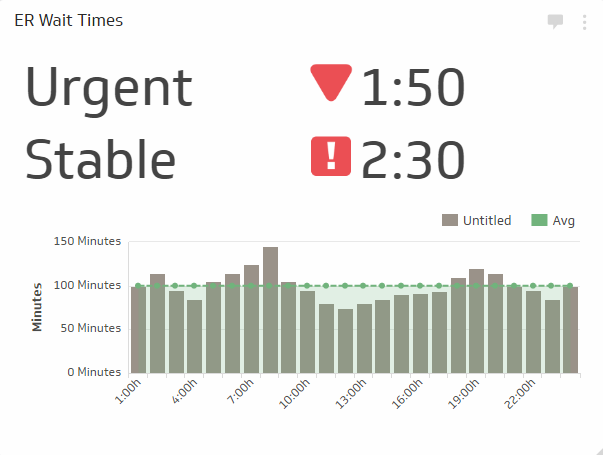
ER Wait Times measures the amount of time patients are currently waiting before being seen by an ER physician. This metric is the focus of much public interest because it provides a clear indication of your hospital’s performance and ability to provide quality patient care. This metric may have two iterations: the first monitors the current status of your ER in real-time, and the second monitor ER wait times over time periods such as weeks, months, or years.
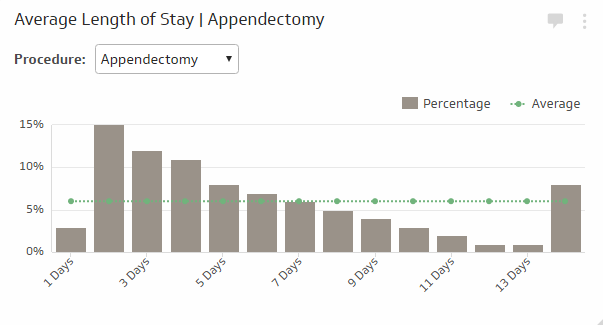
The Average Length of Stay KPI measures how long, on averarge, patients stay in your hospital after having a specific procedure, such as an appendectomy. This KPI can vary widely based on what type of facility you are operating (long term vs short term) and what type of medical conditions are involved. Once you’ve gathered your data, you can concentrate on investigating why your number is what it is by showing it in this KPI. Is it influenced by hospital acquired infections, or by excellent healthcare service? Calculating this KPI is straightforward, but it is important to give each patient a base-value of 1 to account for all visits, even if they are not overnight patients.
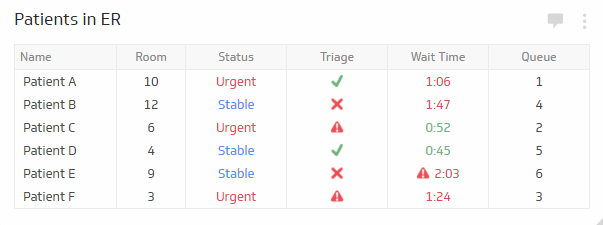
The Number of Patients in the ER metric provides key data about patients in the ER, such as their room number, the urgency of their case, current wait time, and if they’ve been attended to by nurses. For an in-depth view of your current performance, these metrics, including information on all your patients, should be shared with all of your ER staff.

The Current ER Occupancy KPI measures how many beds are currently occupied in your ER compared to the total number of beds. This KPI needs to be monitored in real-time so your staff is aware of the current situation in the ER and can respond to developing situations with more agility. For example, if a sudden torrent of patients threatens to overwhelm the ER, this KPI will show when you are approaching maximum capacity and should start rerouting patients to other hospitals.





